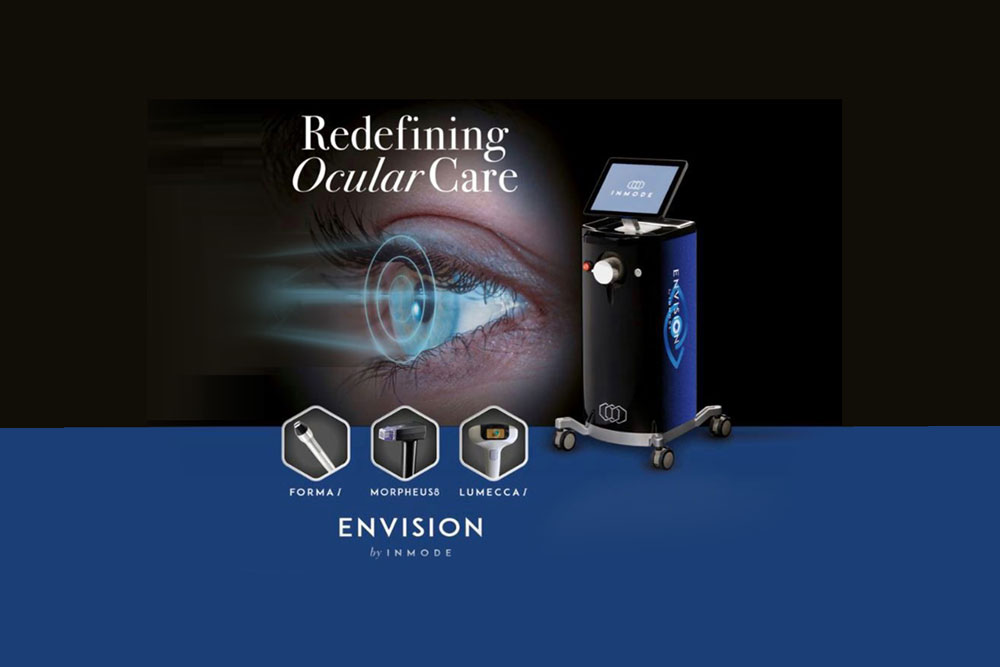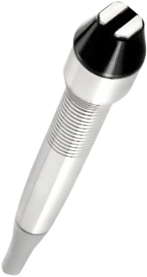Dry Eye
Dry Eye
Dry Eye

Envision Radio Frequency and IPL (Intense Pulse Light) Device
Dry Eye Treatment by Inmode
INMODE’S NON-SURGICAL ALTERNATIVES TO TREAT THE CAUSE OF DRY EYE
Envision offers a non-drug therapy to improve your vision and quality of life!
Ask us about the revolutionary way we can quickly treat your Dry Eye symptoms.
Forma-l
Forma-l (bipotar radiofrequency) addresses the symptoms of dry eye disease (DED) caused by Meibamian Gland Dysfunction (MGD). Intended for use in the the periorbital area and upper and tower lids and relieves inflammation of Meibomian glands and eye irritation.
INMODE Forma-| Radiofrequency treatment (RF) uses Radio-Frequency energy to generate heat which is applied to the skin around the eyes. This heat stimulates collagen formation, bringing white blood cells, and stem cells to the skin around your eyes while reducing inflammation. The main benefits of RF are:
- Safely heating Meibomian glands for expressions
- Tightening existing collagen at the dermal layer
- Stimulating the production of NEW collagen in the deeper dermis
This treatment aids in opening up clogged Meibomian glands, allowing for improved tear production and secretion.


Lumecca-l
Lumecca-I is an effective treatment for benign pigmented epidermal lesions and benign cutaneous vascular lesions. It was developed with an advanced xenon flash lamp that delivers 40% of its total pulse energy in the 500–600 nm range. This wavelength allows IPL energy to penetrate the skin and be selectively absorbed by chromophores within the lesion (melanin or hemoglobin).
INMODE Lumecca Intense Pulsed Light (IPL) helps control the inflammatory process, interrupt the cycle of inflammation, and reduce the need for medications. IPL treats ocular rosacea, Meibomian Gland Dysfunction (MGD), and inflammatory dry eye.
During treatment, controlled pulses of light are applied to the skin around the eyelids and face. The light energy is absorbed by the mitochondria within the Meibomian glands, helping “switch on” the glands so they function more actively—almost like making them younger. IPL has also been shown to decrease Demodex and bacteria around the eyelids. The powerful bursts of light close abnormal blood vessels that release inflammatory mediators in ocular rosacea. As a result, the glands produce healthier oil, improving tear-film stability and reducing dry-eye symptoms. IPL also helps reduce surface bacteria and Demodex populations on the eyelids.
We utilize the Topcon CA-800 to help address the root of dry eyes.
With the Infra-red illumination of the CA-800, the Meibomian Glands of the upper and lower eyelid can be captured and analyzed. These glands secrete the oil that coats the eyes and tear film, to prevent the tears from evaporating too quickly.
Meibomian-Gland Imaging
What exactly is Tear break-up time (TBUT)?
Tear break-up time (TBUT) is the time taken for the first dry spot to appear on the cornea after a complete blink. The CA-800 gives an accurate measurement of the TBUT, giving the physician the ability to assess the stability of the tear film.
What is dry eye?
Dry eye is a chronic condition in which the body does not produce enough quality tears to sufficiently lubricate the eye. Without tear lubrication, the eyes may become irritated, causing burning, itchiness and excessive watering. Patients with severe cases of dry eyes may actually experience vision impairments caused by damage to the surface of the eye. Fortunately, dry eye treatments are available to help the eye produce more of its own natural tears and also manage inflammation.
Did you know…
that dry eye is a very common condition among residents over age 50? The American Academy of Ophthalmology reports that nearly 4.9 million Americans over age 50 are suffering from dry eye, with women outnumbering men nearly 2 to 1. There are many reasons why people develop dry eye, including environmental conditions, the use of certain medications, and the long-term use of contact lenses.
Frequently Asked Questions
Should I be treated for dry eye?
The only way of knowing whether you need treatment for dry eye is by visiting your eye doctor for a diagnostic exam. Your eye doctor may recommend treatment if you are found to have abnormal tear production that is contributing to dryness on the surface of your eyes.
What should I expect during treatment for dry eye?
There are several ways of treating dry eye. Together with your optometrist, you will decide upon the treatment that best fits your needs. This may include supplementing your natural tears with artificial solutions that can be purchased over-the-counter at most drug stores. You may also be prescribed a medication designed to increase natural tear production. In some cases, eye doctors may recommend conserving natural tears and preventing them from draining by blocking tear ducts or surgically closing them altogether.
Will I need to follow any special instructions during treatment?
You can continue to treat your dry eye with eye lubricating drops that provide temporary relief. Some patients also experience improvements in natural tear production by consuming an omega-3 supplement. Other steps you can do to minimize symptoms include wearing sunglasses outdoors, using a humidifier in your home, and remembering to blink when watching television or staring at a computer screen.

